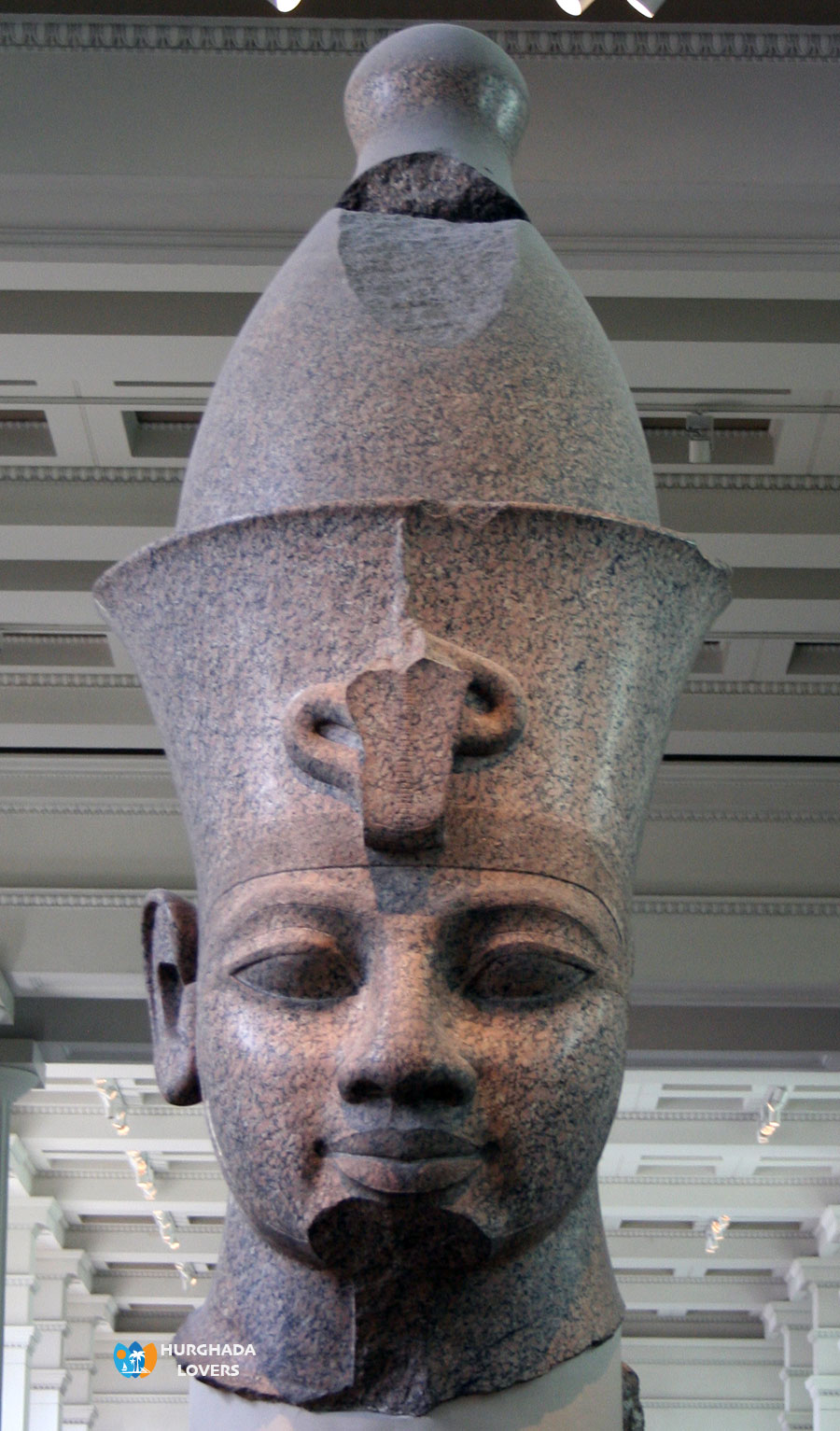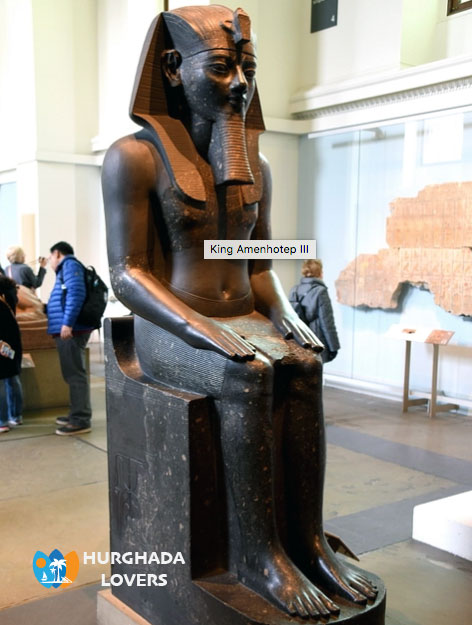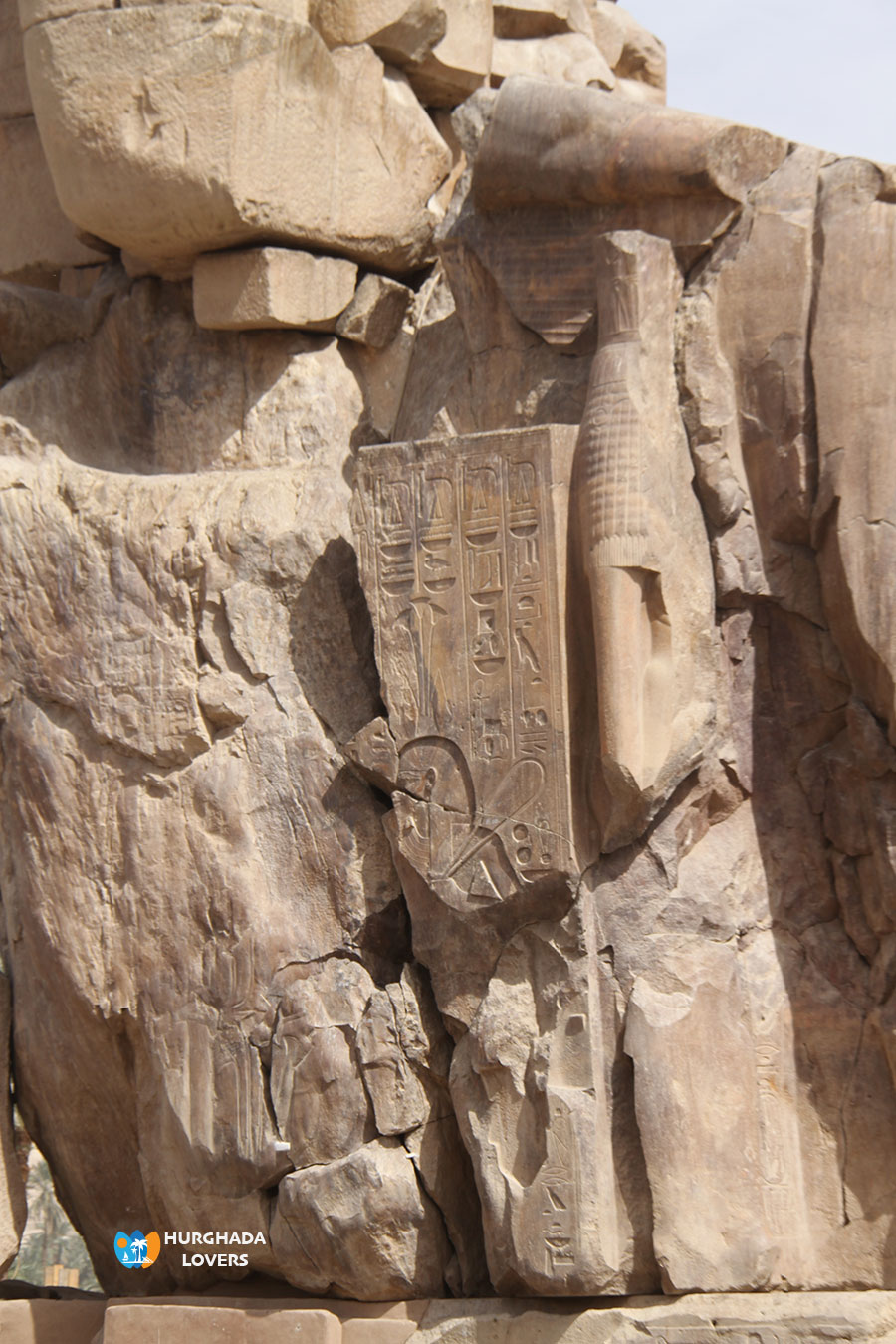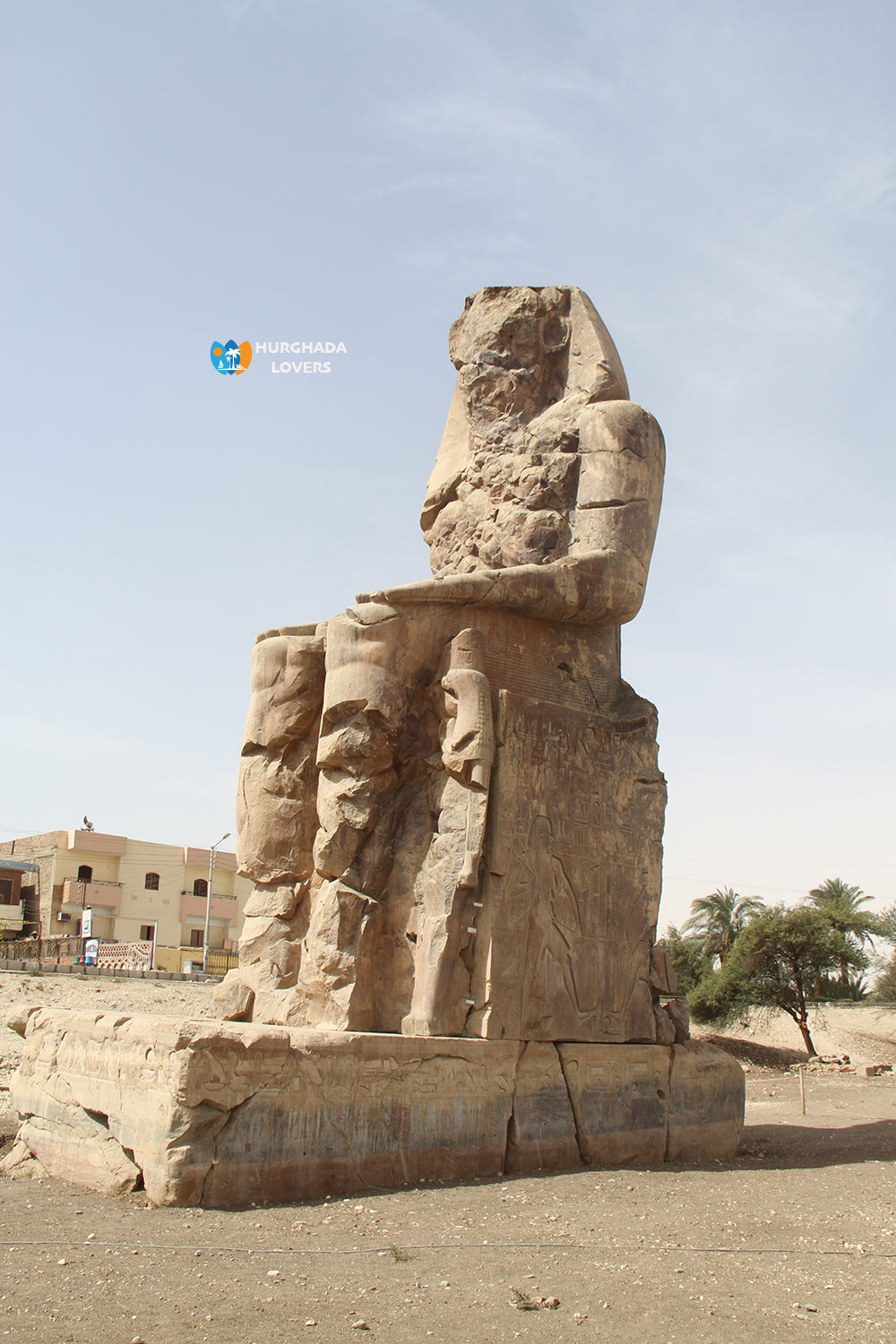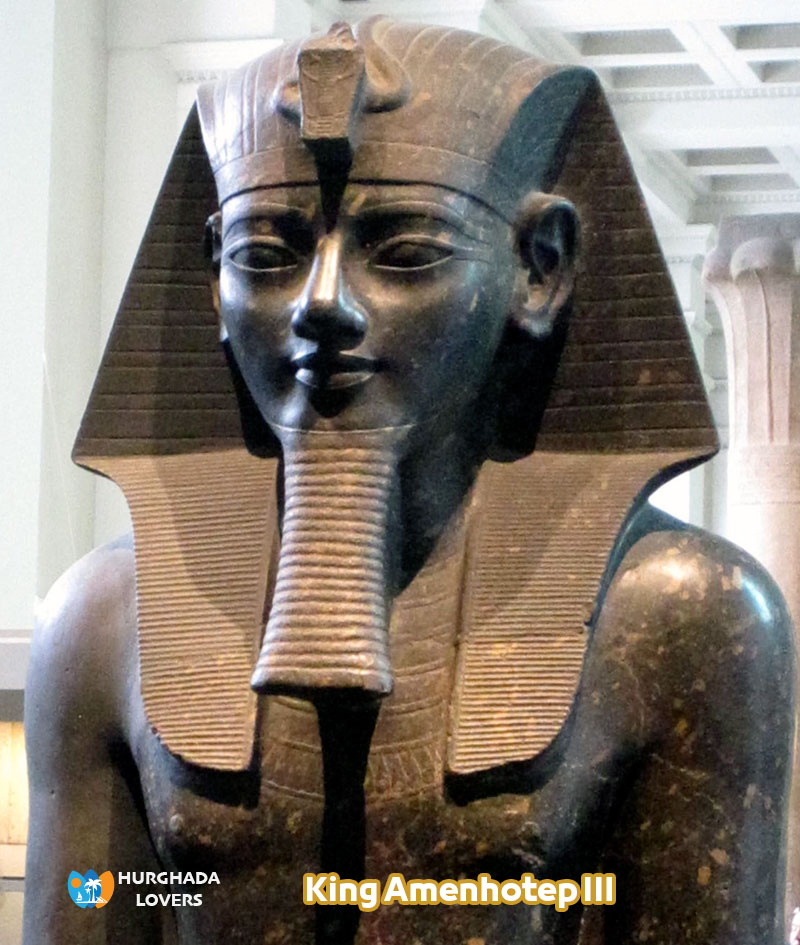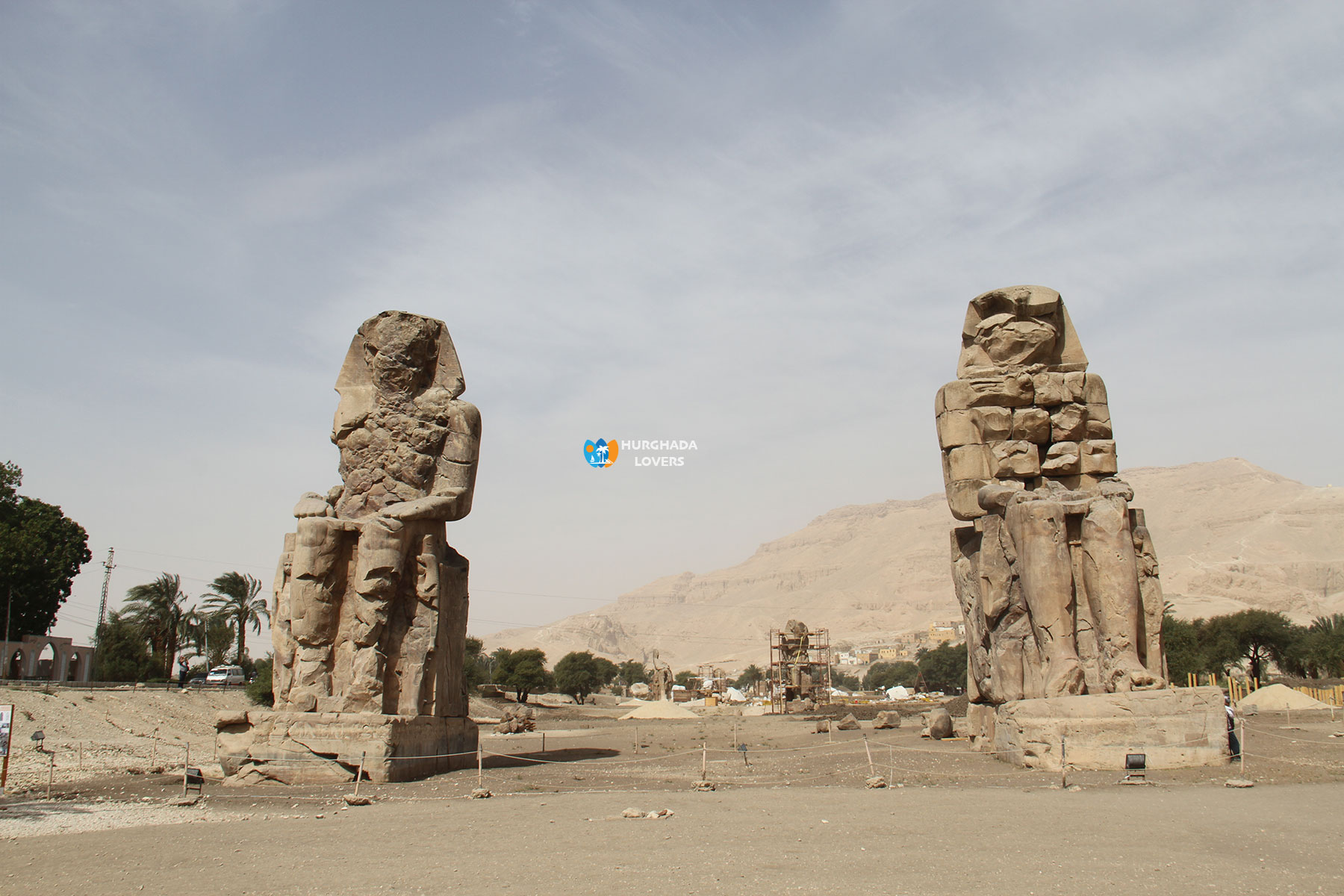Colossi of Memnon in Luxor, Egypt | Facts, History, Discover Egyptian Monuments and the Secrets of Sound & Singing of Colossi of Memnon.
Hurghada lovers Offer Luxury Hurghada to Luxor Tours | El Gouna to Luxor Tours | Makadi bay to Luxor Tours | Sahl Hasheesh to Luxor Tours | Soma bay to Luxor Tours.
Colossi of Memnon Facts
- It is located in the mortuary temple of Amenhotep III, the most famous Pharaohs kings.
- The two symmetries were built in 1351 BC.
Who is the king depicted in Colossi of Memnon?
- King Amenhotep III of the Eighteenth Dynasty built the two statues adjacent to his temple on the western mainland.
- The architect, Amenhotep bin Habu, designed the temple and supervised its construction to know more about Architecture in ancient Egypt.
- The statues were built during the reign of the Pharaonic king Aamenophis III in his Mortuary Temples, but over time and climatic conditions and erosion remain only these two colossi.
Why do these two colossi bear the name Colossi of Memnon?
One of the two colossi that bears this name was named by the Greeks when one of the statues cracked and produced a deep sound, and the Greeks named it in relation to the legendary hero Memnon who was killed in the famous Trojan War, where every morning he called his mother, and she mourned his death as his tears were the morning dew according to Greek legend to know more about The Pharaonic legends.
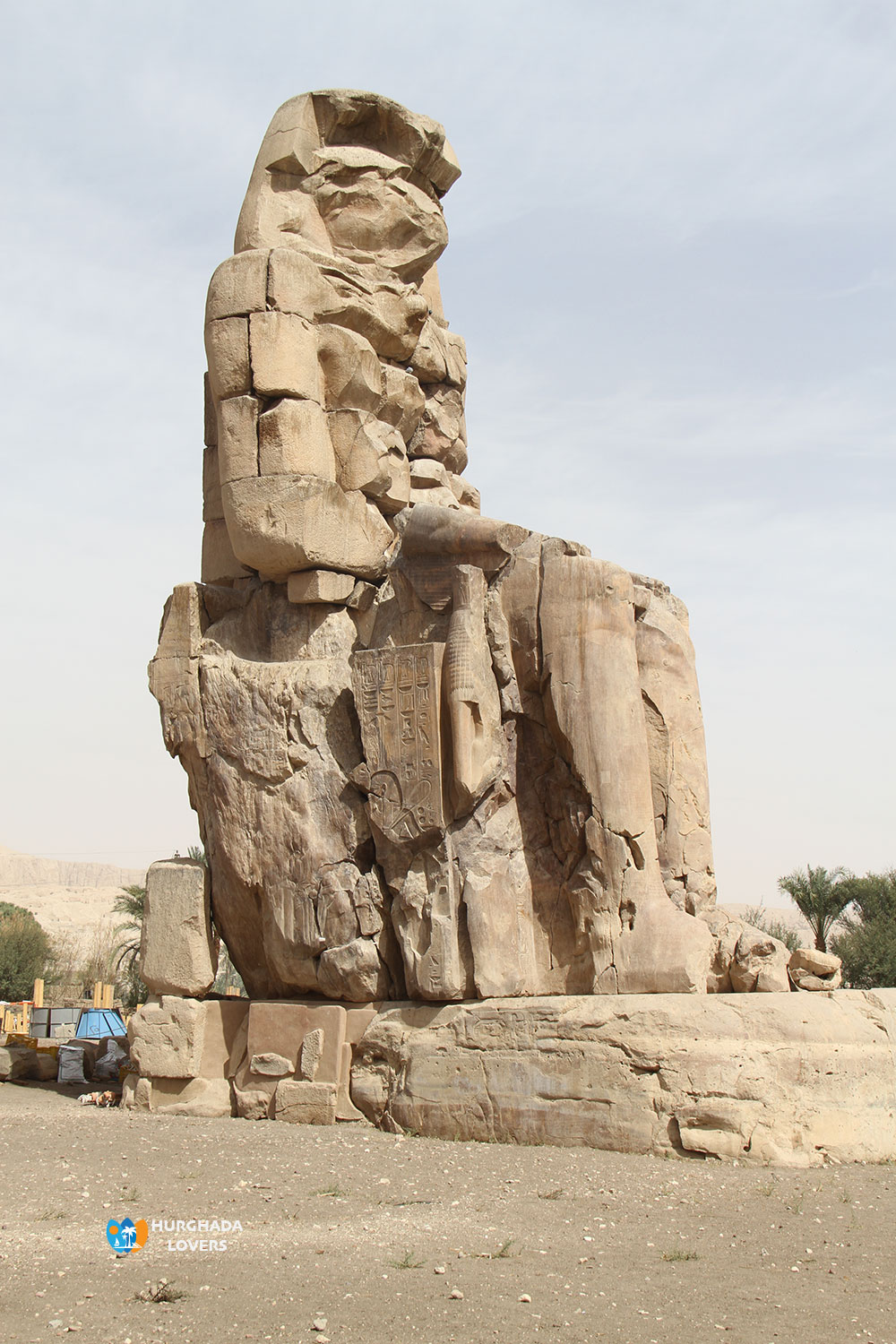
The legend of the song of the colossus of Memnon at the time of sunrise:
The story begins when cracks occur in the colossus on the left, or when the wind in the early morning passes through these pheasant cracks a roar and hiss.
A group of Greek historians gathered in the first century BC to say: The statue sings every day at sunrise and is written so far based on the colossus.
You will see 8 names of Roman emperors registered on the statue in addition to the magistracy
The Roman emperor Hadrian his wife spent days near the statues to listen to songs at sunrise to know more about The legends and myths of the pharaohs.
Why is it called Colossi of Memnon?
The statues were associated with the Greek legend of Memnon, where a warrior named Memnon fought hard in the Trojan War and was killed by Achilles, where the Greeks believed that Memnon was the son of the goddess Aurora the goddess of sunrise and that every morning his mother sang to him in a sad voice.
In 200 AD, a Roman emperor (Septimus Severus) restored the cracks in the colossus and thus stopped the sound to know more about The legends of creation in the Pharaonic civilization.
Restoration of the Colossi of Memnon:
Egyptian Ministry of Tourism and Antiquities, in cooperation with the German Institute, restored the Colossus of Memnon in 1998 AD.
Recent discoveries of Colossi of Memnon:
- There are many small statues below the king’s leg, which belong to the God Sekhmet, one of the The Egyptian Gods deities – the Religious rituals in the Pharaonic.
- A stone block made of lime belonging to King Amenhotep the Third in the shape of the Sphinx.
- Inscriptions on the walls and columns of the statue symbolizing the scenes and rituals of Religious life in ancient Egypt.
- Pieces of wall decorations were discovered that refer to scenes of the Jubilee Festival of King Amenhotep III, one of the Festivals in Ancient Egypt, and offering offerings to the ancient Egyptian goddess “Funerary beliefs in ancient Egypt“.
- A small statue of the king’s wife was discovered.
Where is the Colossi of Memnon located?
It is located in front of the Temple of King Amenhotep III on the western mainland of the city of Luxor in southern Egypt. It is located near the Temple of King Ramses II, “The Temple of Ramesseum“, the Temple of king Merneptah Pharaohs and the ancient Temple of Medinet Habu.

When was the Colossi of Memnon built?
It was built in 1386-1353 BC during the reign of King Amenhotep III of the “Pharaonic Eighteenth Dynasty“.
What does the Colossi of Memnon represent?
Two stone statues were built, referring to King Amenhotep III, his wife, Queen Tiye, and his mother, Queen Motemoya.
The stone statue of al-Mukalla seated on the throne of ancient Egypt was designed with his wife and mother to know more about Architecture in ancient Egypt.
What was the shape of the Colossi of Memnon?
The Colossus of Memnon is carved from quartzite sandstone. It is 18 meters tall and each statue weighs about 720 tons.
The design of the statue was King Amenhotep the Third sitting on a throne with a royal cap on his head and a cobra snake on the front of the head for protection and resting on his knees to indicate ownership in ruling the throne of the Ancient Egypt Facts, while the king’s face turned to the sunrise and the Nile River.
There were two statues of two women, a statue of Queen Tiye, wife of King Amenhotep III on the right side, while a statue of Queen Mutemoyah “mother of the king” on the left side to know more about The Pharaonic political pyramid and Sculpture in Ancient Egypt.
What distinguishes the Colossi of Memnon?
What distinguishes the statue of Memnon most is the large size of each statue, as the statue of Memnon is considered the second largest ancient Pharaonic statue in Egypt, in addition to the distinctive architectural design and the sounds that it makes every day at sunrise to explain to us the secrets of Art in Ancient Egypt.
What is the Colossi of Memnon made of?
The statue was made of quartzite sandstone extracted from the quarries of the Red Mountain in Old Cairo “Memphis” and then moved to Thebes “Luxor”.
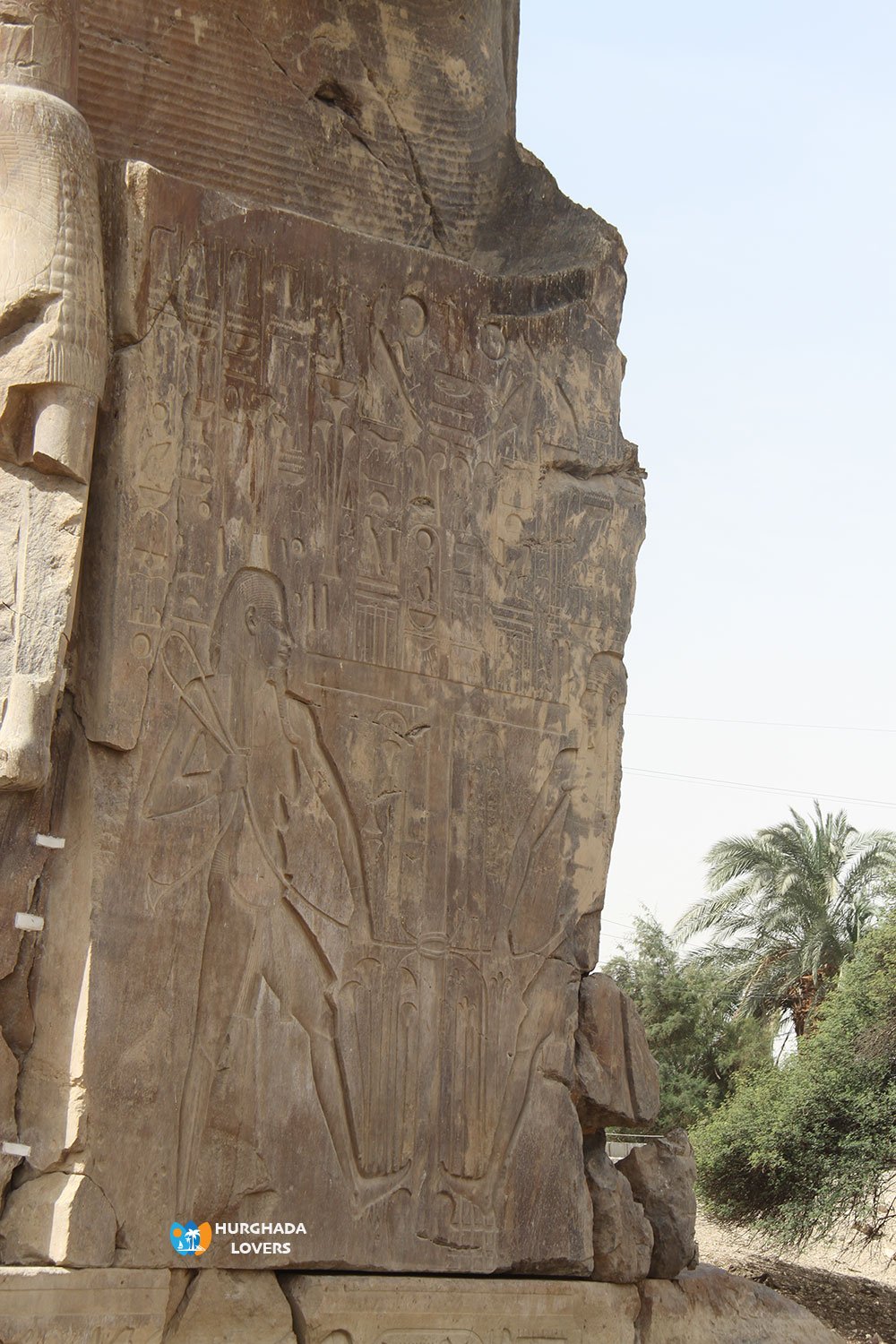
What happened to the Colossi of Memnon?
The top of the statue was destroyed, in addition to the cracking of the lower half of the Colossus of Memnon, as a result of a high-strength earthquake in 27 BC.
Voice is grateful Singing of Colossi of Memnon:
After the strong earthquake of the western mainland area in Luxor, cracks and cracks occurred in the northern part of the statue, and with the rise in temperatures and humidity in the summer and winds, the cracks increased, and then strange sounds came out every day with sunrise, and it is considered one of the most important The legends and myths of the pharaohs.
When did Giant Memnon stop singing?
Emperor Septimius Severus restored the ancient statue, completely closed the cracks, and repaired the cracks in the northern and lower parts in the year 199 AD. This was the reason why the statue of Memnon stopped singing every day at the sunrise of a new day.
Why is the Colossi of Memnon important?
The purpose of building the Colossus of Memnon was to protect the temple of King Amenhotep III from enemies in the era of the The New Kingdom in History Of Egyptian.
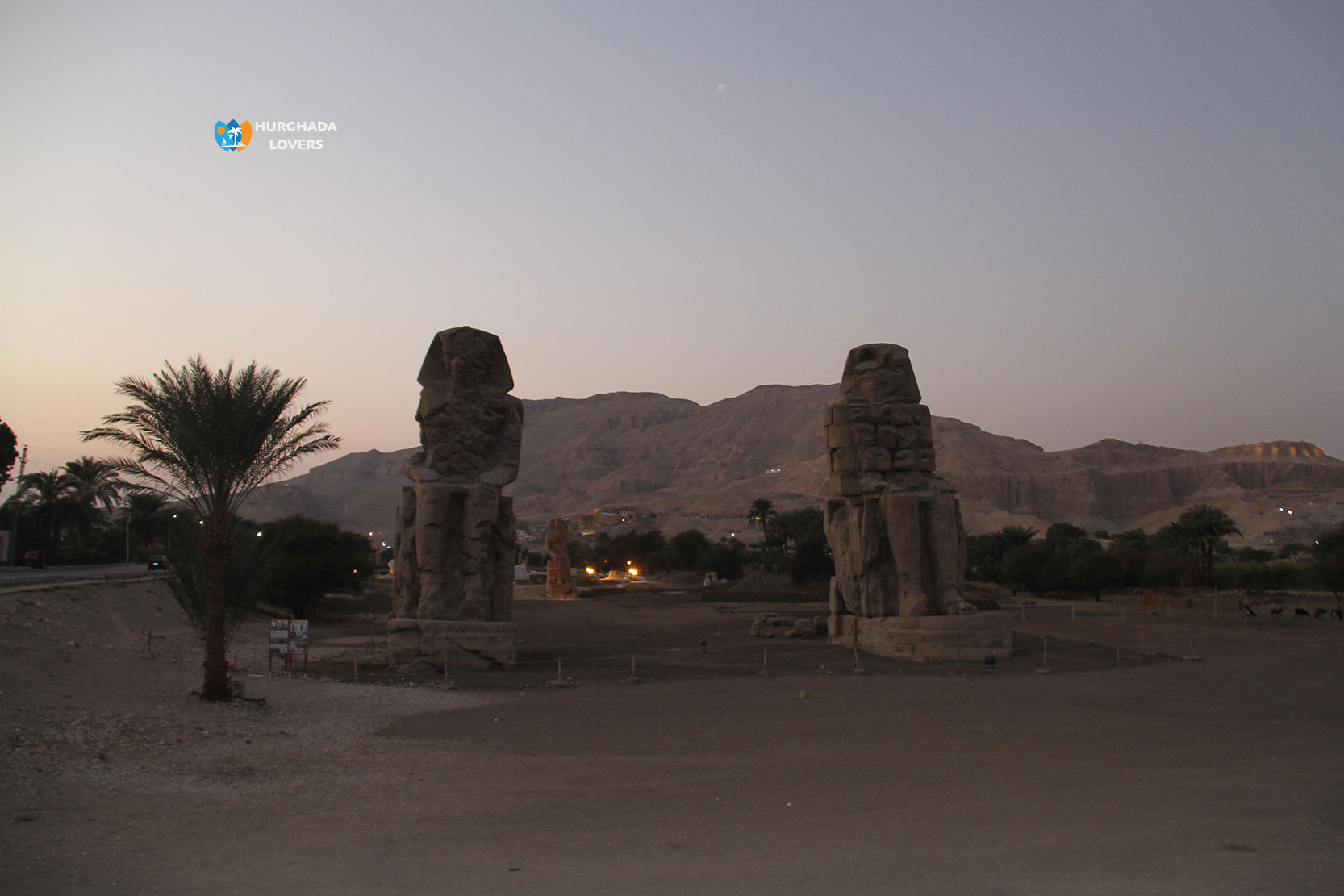
About King Amenophis III:
Title: Pharaoh of the Sun
Pharaonic dynasty: 18th
Born: 1411 B.C., Ancient Egypt
Period of reign: 1391-1353 BC or 1388-1351 BC
Duration: 38 years
Cause of death: Unidentified disease
Burial place: The Tomb of Amenhotep III NO. KV22 in Luxor, the Valley of the Kings.
Father: King Thutmose IV
Mother: Queen Mut Em Wea
Wives:
- Queen Sat Amon
- Queen Gelojipa
- Queen Tyi
Sons and daughters:
- King King Akhenaton.
- Prince Thutmose
- Sat Amon
- Isset.
- Henut Ta Neb
- Nebet Aaha.
- Semenekh Ka Ra
- Baket Aton
His constructions:
- Malkata.
- The funerary temple of Amenophis III in Luxor.
- The Colossi of Memnon in Luxor.
The reign of King Amenophis III:
- Interested in hunting and wild bull hunting trips to know more about Trade in Ancient Egypt.
- A commemorative scarab was found from the king with words and texts indicating that he had hunted 100 bulls in just two days on one of his chariot trips and another in which it is mentioned that the king had hunted 102 lions.
- Interest in military campaigns against Nubia known at the time as Kouche until reaching the Fourth Waterfall.
- An archaeological painting called the obesity painting recorded by the king’s conquests in Nubia has been found and is now kept in the The British Museum.
- The king’s reign was a great prosperity and security stability.
The king’s Mummy was discovered by chance in a tomb in the Area of Deir El Bahari in Luxor in 1881 AD, where the priests of the temple hid the mummy.
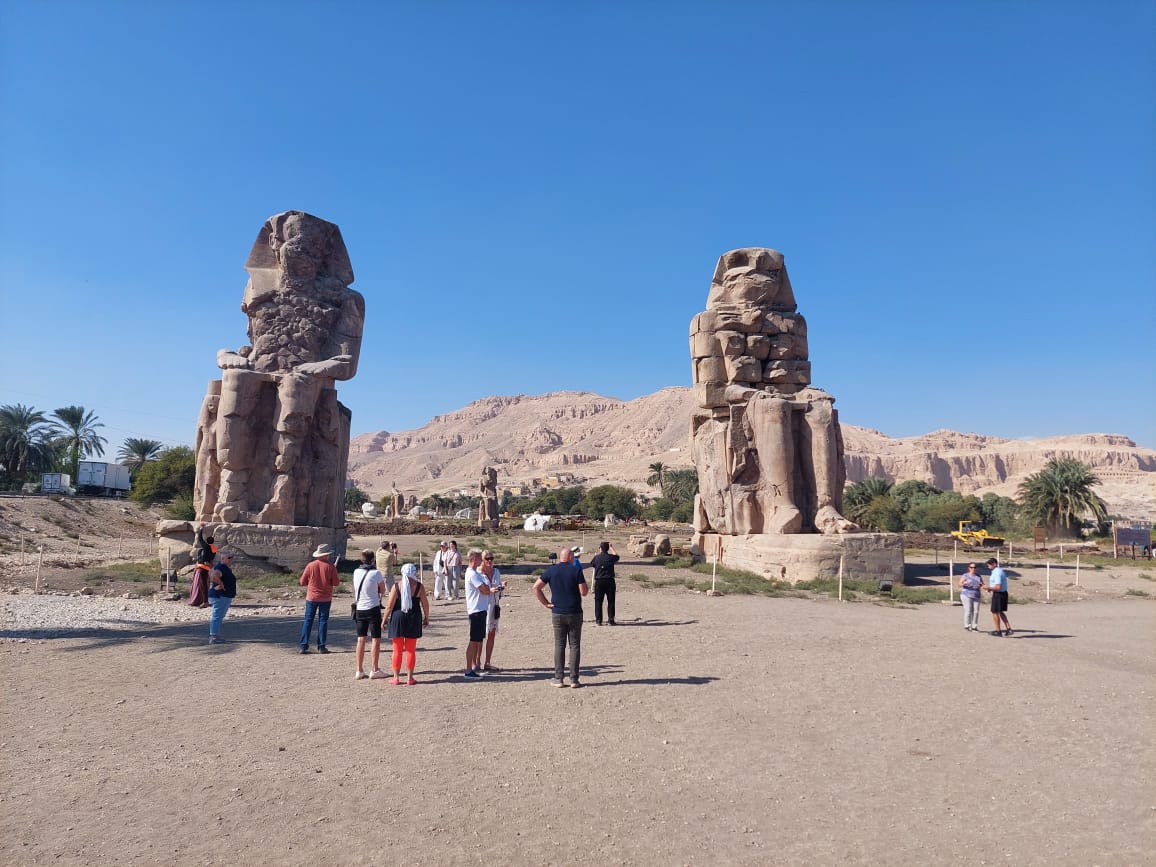
Colossi of Memnon Location:
Luxor West Bank, Egypt.
Colossi of Memnon Opening Hours:
Every Day From 06:00 AM To 05:00 PM.
Colossi of Memnon Ticket Price:
Free.
FAQ:
What do the Colossi Memnon represent?
Rule of the king over Egypt.
Who erected the Colossi of Memnon?
King Amenhotep III.
Where was the Colossi of Memnon found?
Luxor West Bank.
What is the purpose of the colossi?
What damaged the Colossi of Memnon?
Earthquake.
What is the story of Colossi of Memnon?
The Colossi of Memnon in Luxor Tours, Egypt | History Of Egyptian & the construction of the most important pharaonic monuments of ancient Egypt.
what are the secrets of the interest of King Amenophis III “Egyptian Pharaohs kings” in the construction of the two colossi, what is the legend of the song of the colossus at the time of sunrise, the reason for the name and the dates of the visit.
Written by Colossi of Memnon: Tamer Ahmed Abdel-Fattah | Tourism Expert | Tour Operator in Hurghada

